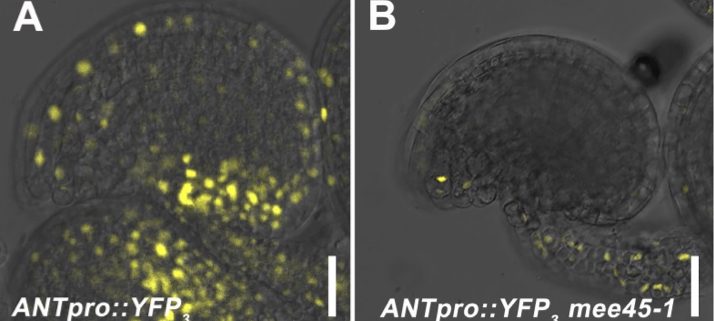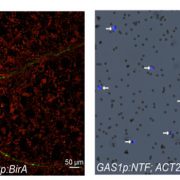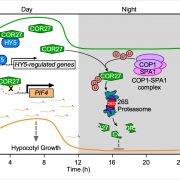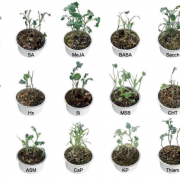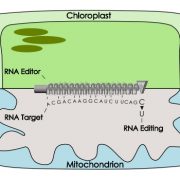Maternal control of seed size through the ovule
Li et al. investigate how Arabidopsis seed size is controlled by maternal tissues.
By Ying Ju Li, Yang Yu and Ying Hua Su, State Key Laboratory of Crop Biology, College of Life Sciences, Shandong Agricultural University, Shandong, China
Background: Seed size is determined by the coordinated development of maternal and zygotic tissues. The diploid embryo, the triploid endosperm, and the maternal ovule integument coordinate their development to determine the final size of the seed. In Arabidopsis (Arabidopsis thaliana), a number of factors act through maternal tissues (ovule) to control seed size. The AINTEGUMENTA (ANT) gene encodes an AP2-domain transcription factor that acts maternally to control seed size. maternal effect embryo arrest (mee) mutants have been identified based on their phenotypes during embryogenesis that are caused by effects on maternal tissues. Although many genes regulate seed size through maternal tissues in Arabidopsis, it is still unclear how seed size is maternally controlled, and how ovules and embryos coordinate their growth to determine final seed size.
Question: We wanted to know how genes participate in the maternal control of seed size. We searched for mutants with small-sized seed phenotypes in the collection of mee mutants, and studied the function of one candidate by characterization of the mutant and overexpression lines.
Findings: We identified the B3-type transcription factor MEE45 as a seed size regulator. MEE45 controls cell proliferation in the ovule integument and affects final seed size. Moreover, MEE45 directly binds to the promoter region of ANT to activate its transcription. We also showed that auxin biosynthesis capacity in ovules—as represented by the expression of the auxin biosynthesis gene YUCCA4 and free auxin levels—is regulated by a MEE45-ANT pathway. These results support maternally-controlled embryo development and seed size determination. Our study provides a deeper understanding of maternal tissue-mediated regulation of seed size and suggests that MEE45 manipulation may be a useful tool for the improvement of crop seed production.
Next steps: Understanding the genetic and molecular basis of seed size control will help scientists utilize beneficial seed size genes to improve crop yield. Next, we wish to manipulate MEE45 and/or related pathways and components in crops, which may enable new technologies to increase seed yields in crop production.
Reference:
Ying Ju Li, Yang Yu, Xiuying Liu, Xian Sheng Zhang and Ying Hua Su. (2021). The Arabidopsis MATERNAL EFFECT EMBRYO ARREST45 Protein Modulates Maternal Auxin Biosynthesis and Controls Seed Size by Inducing AINTEGUMENTA. The Plant Cell. https://doi.org/10.1093/plcell/koab084


